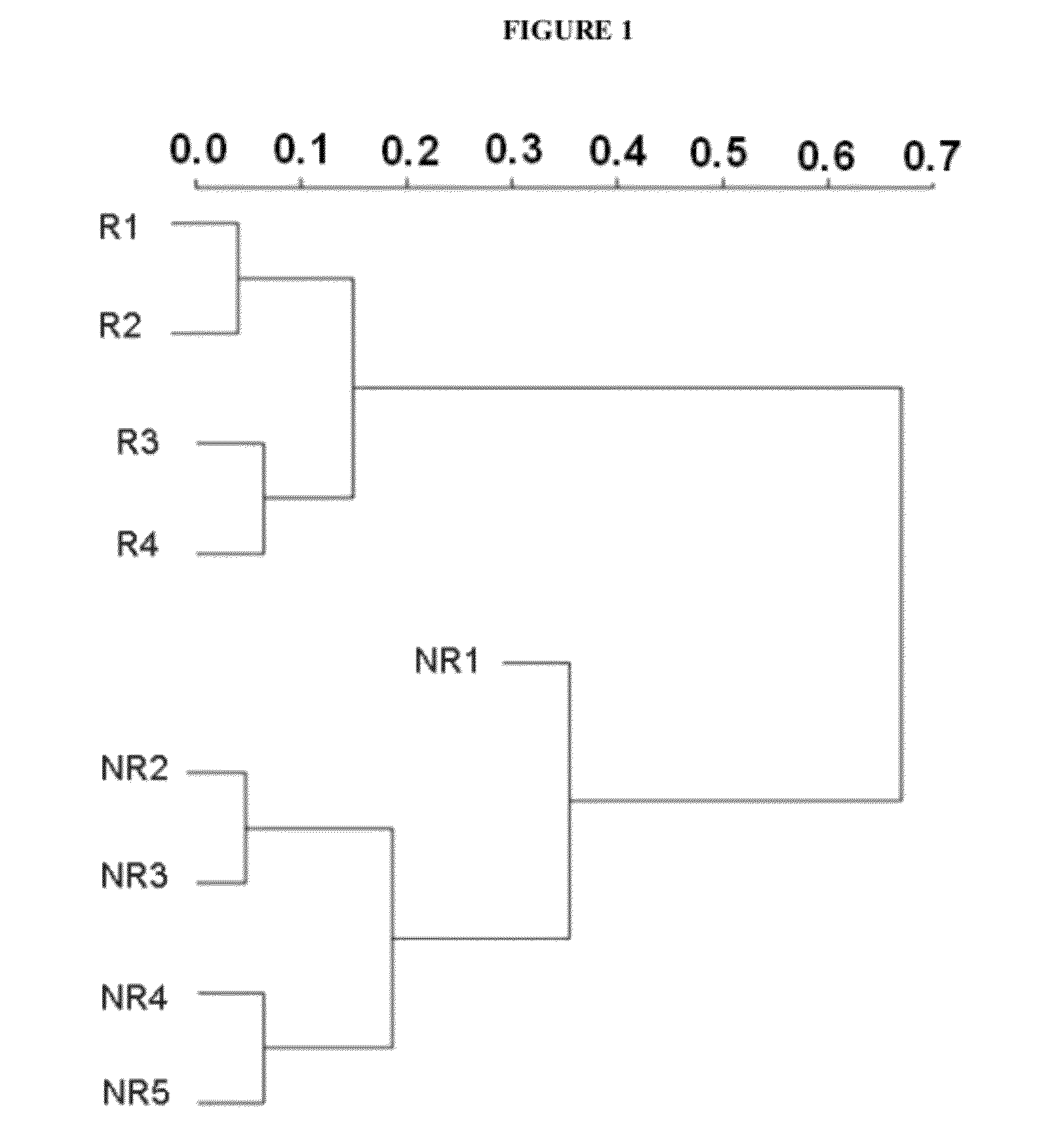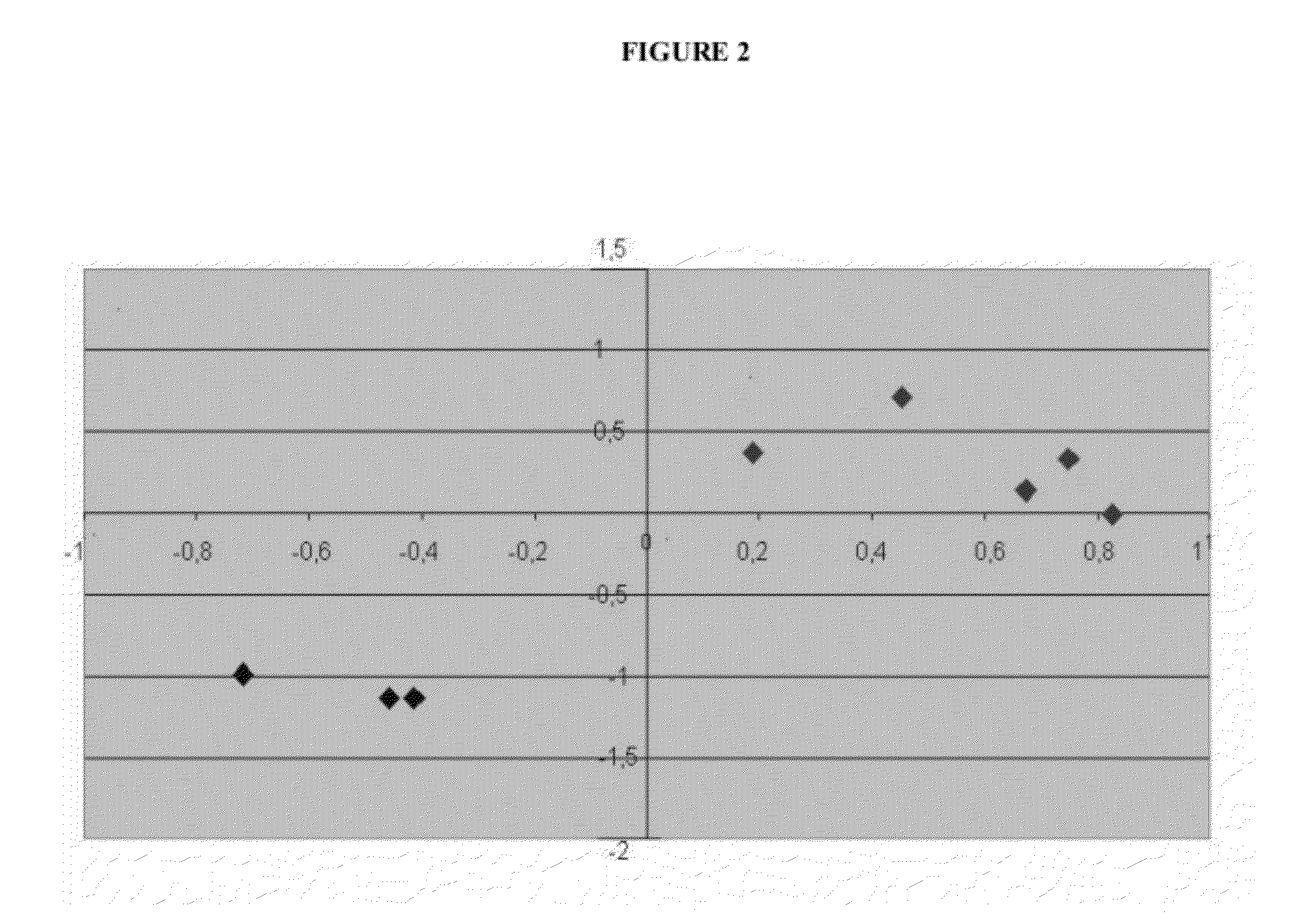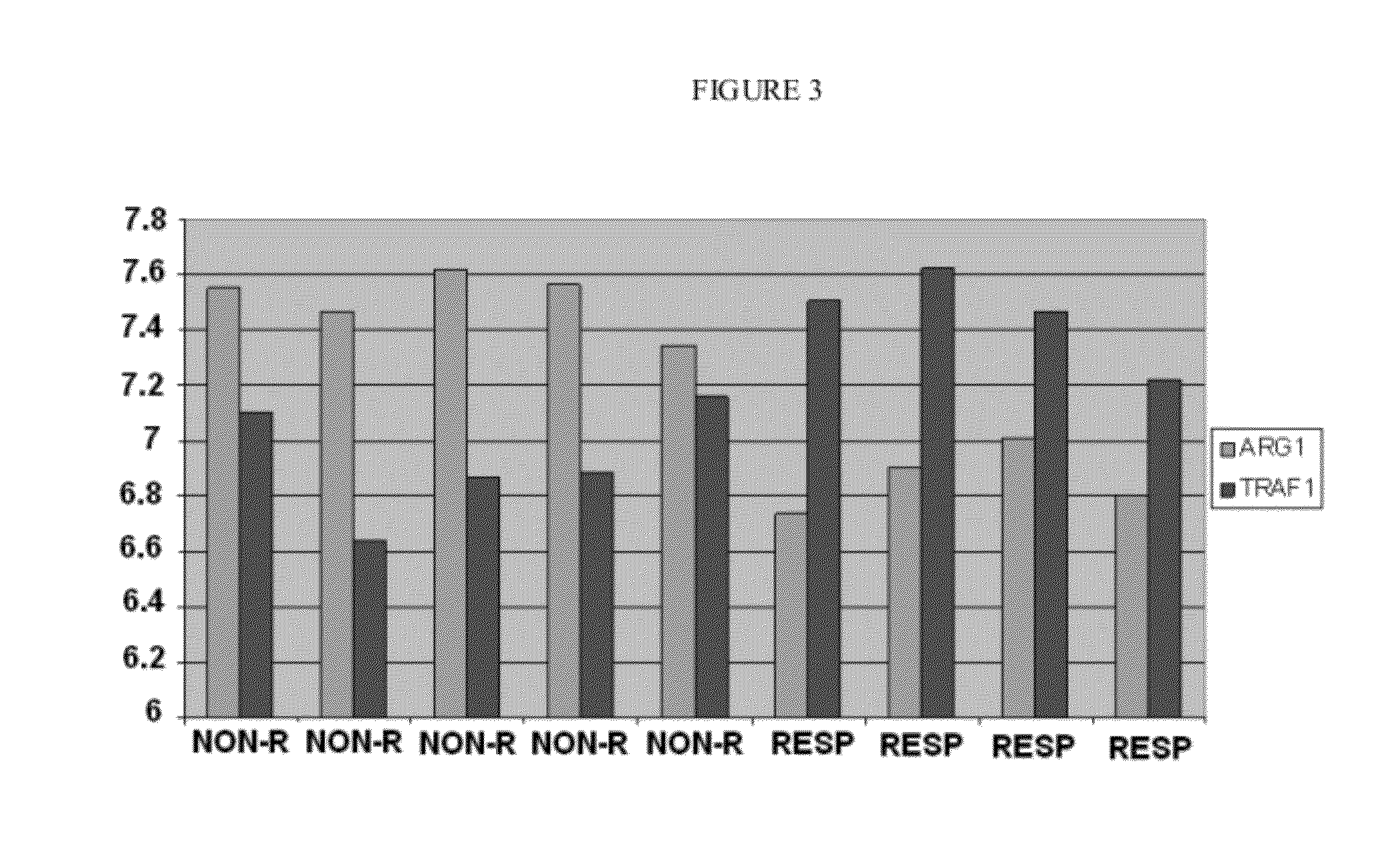Vitro method for the prognosis or prediction of the response in patients with rheumatoid arthritis treated with agents that recognize the cd20 membrane receptor in b lymphocytes
a rheumatoid arthritis and cd20 membrane receptor technology, applied in the field of in vitro methods, can solve the problems of complex disease in all, poor response to rituximab in individuals with incomplete depletion, and high invasiveness of patients' extraction of synovial biopsies,
- Summary
- Abstract
- Description
- Claims
- Application Information
AI Technical Summary
Benefits of technology
Problems solved by technology
Method used
Image
Examples
example 1
Patient Selection
[0037]Patients with RA were initially selected at the Rheumatology Unit of the Hospital Universitario Vall d'Hebron (Barcelona, Spain). All patients had been diagnosed RA following the criteria established by the American College of Rheumatology (ACR). The patients selected for treatment had active RA: DAS28 index (Disease activity score >5.1). The clinical assessment of patients using the DAS28 index was performed every three months of treatment. All procedures conducted are in line with the Declaration of Helsinki. The study was approved by the Ethics Committee of the Hospital Universitario Vall d'Hebron.
[0038]A positive result was obtained in the rheumatoid factor (RF) serology test in eight of the patients treated with rituximab. In addition, five of the patients were anti-CCP (anti-cyclic cytrullinated peptide) positive. All patients were women in which treatment with anti-TNF agents had failed. After intravenous administration of methyl prednisone at a dose of...
example 2
[0039]The blood samples for RNA sampling were taken from the patients during the first day of application of rituximab.
[0040]This invention used the “PAXGene” system (PreAnalytix, Switzerland) for immediate preservation of the RNA from whole blood samples. This system uses a RNA-preserving agent contained in the same blood sampling tube and the blood profiles obtained are thus representative of in vivo conditions. All “PAXGene” tubes were stored frozen at −80° C. until the RNA was isolated. The RNA was taken using the “PAXGene” full isolation kit (Qiagen, US). Finally, the quality of the RNA of all samples was assessed using the “BioAnalyzer” gel system (Agilent, USA).
example 3
Analysis by Flow Cytometry
[0041]The analysis by flow cytometry was performed on all patients included in the study the same day of blood sampling for the microarray assay. Subpopulations of leukocytes and red blood cells were determined from the whole blood sample. In order to estimate the cell purity level obtained in the lymphocyte selection step, determination by flow cytometry of CD4+T and CD20+B cells was also performed.
PUM
| Property | Measurement | Unit |
|---|---|---|
| Fraction | aaaaa | aaaaa |
| Fraction | aaaaa | aaaaa |
| Fraction | aaaaa | aaaaa |
Abstract
Description
Claims
Application Information
 Login to View More
Login to View More - R&D
- Intellectual Property
- Life Sciences
- Materials
- Tech Scout
- Unparalleled Data Quality
- Higher Quality Content
- 60% Fewer Hallucinations
Browse by: Latest US Patents, China's latest patents, Technical Efficacy Thesaurus, Application Domain, Technology Topic, Popular Technical Reports.
© 2025 PatSnap. All rights reserved.Legal|Privacy policy|Modern Slavery Act Transparency Statement|Sitemap|About US| Contact US: help@patsnap.com



